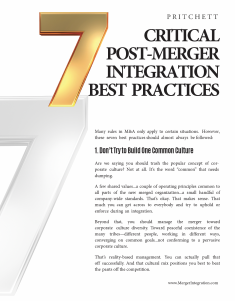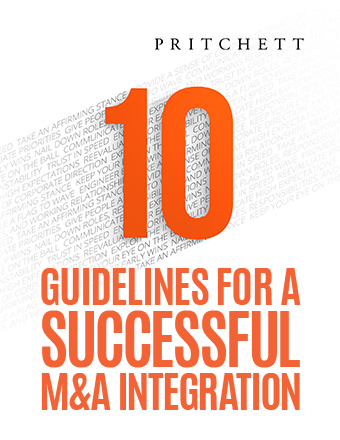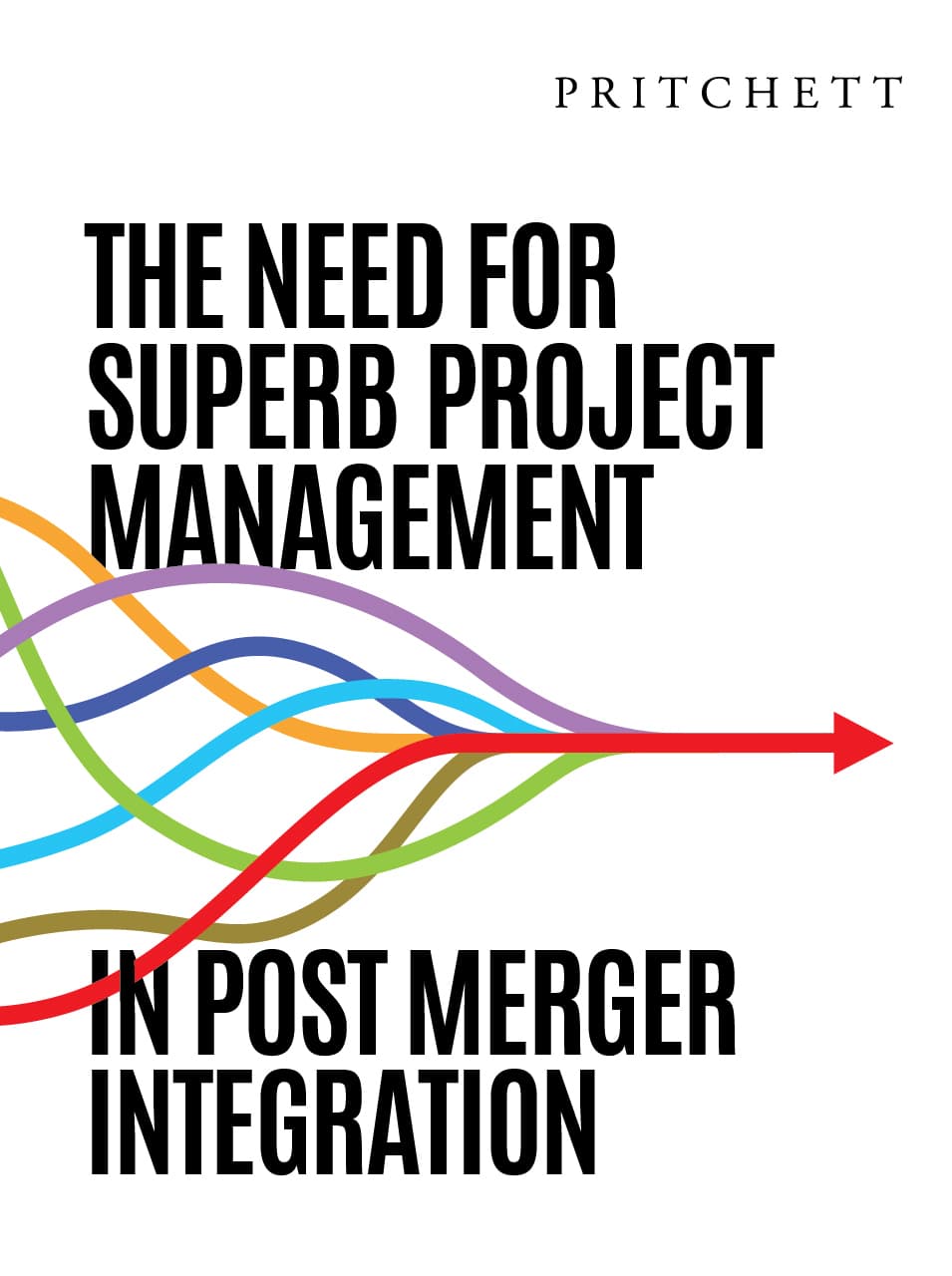Many post-merger integration best practices only apply to certain situations. However, these seven should almost always be followed:
- Don’t Try to Build One Common Culture
Are we saying you should trash the popular concept of corporate culture? Not at all. It’s the word “common” that needs dumping.
A few shared values...a couple of operating principles common to all parts of the new merged organization...a small handful of company-wide standards. That’s okay. That makes sense. That much you can get across to everybody and try to uphold or enforce during an integration.
Beyond that, you should manage the merger toward corporate culture diversity. Toward peaceful coexistence of the many tribes—different people, working in different ways, converging on common goals...not conforming to a pervasive corporate culture.
That’s reality-based management. You can actually pull that off successfully. And that cultural mix positions you best to beat the pants off the competition.
- Engineer Early Victories
Rapid success will help offset the skepticism from the critics of the transaction. You protect the deal by developing hard proof that things are headed in the right direction.
The most convincing evidence is financial victories. As the saying goes, "Money doesn’t talk, it screams." When the numbers stack up favorably, people pay attention. If you can show quick merger payoffs that carry dollar signs, the gripers, whiners, and other nay-sayers start losing credibility and resistance starts to soften.
- Communicate Carefully
During times like these you also need to exercise more “mouth control.” In the super-charged atmosphere of a merger, almost anything managers say can be used against them. This is not a matter of saying less. It’s about being far more careful in what you say, how you say it, and to whom.
Don’t presume there has to be a signed contract for people to take what you say as a firm commitment. Like a raw nerve, they react to the slightest hint or innuendo, reading more into your statements than you intend.
- Re-Recruit your Keepers
You might as well operate from the premise that everybody, in both organizations, is considering other employment. With that as your mental framework, take a close look at the situation. Who will be most crucial to the success of the merger? Who can you not afford to lose?
Figure this out in a hurry and engineer a re-recruitment effort that helps you hang onto these folks.
- Favor the Best
Too often decisions are designed to achieve balance rather than the best. Good management gets sacrificed on the altar of compromise.
Now is the time to go for organizational upgrades. Choose the best, regardless of which company provides it. Don’t shoot for a 50-50 deal. Go for 70-30, or 10-90—whatever makes you stronger, faster, more competitive. Whether you’re talking managers, facilities, product lines, sales teams, R & D projects, even brand names, be willing to be “unfair.” Favor the best, instead of playing the game of politically correct tradeoffs.
- Establish Clear Authority
The parent company should be clear, crisp, and quick in establishing authority. Because of misguided political sensitivities, however, merger management often bogs down in consensus building. While this activity wears on, power struggles heat up and people stake out their territories in ways guaranteed to cause trouble.
Even if it makes somebody bristle, you’re much better off announcing immediately who’s calling the shots. Say who reports to whom. Specify everybody’s respective range of responsibilities. Be directive instead of worrying about bruising egos. Rest assured, this task isn’t likely to get any easier later on.
- Take Actions That Are Long Overdue
During the early months of merger integration, about the best you can do is manage the blur—ride the waves, so to speak, instead of trying to be boss of the ocean. You can’t avoid the rough water, so you might as well make the most of it. The ride may be wild and scary, but you sure can cover some miles.
Believe it or not, there is a blessing in all this. With things in such a state of flux, you have a window of opportunity during which you can do dramatic things. It’s like having a license to make wholesale changes, to take actions that are long overdue.
People are primed for it. The energy level is up. So pull the trigger. Don’t squander this chance to do more than merely integrate.





